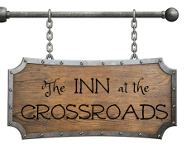
I received a copy of this book as part of a giveaway on Goodreads.com, and was delighted. I didn’t know what to expect, but figured it was some sort of romance. I anticipated a quick read, and if I was lucky, a few descriptions of food.
What I got was an experiential novel that is more like watching a film than reading a book.
Frances Irving, the story’s protagonist, is a proper young woman thrown into extreme circumstances that were not uncommon for her sex during the time period. Forced to make difficult decisions that take her from comfort and security of the world she has always known, she must confront the 19th century South African diamond trade,
It paints a devastatingly harsh picture of the Kimberley Diamond Mine and the politics that surround it. In the photo below, you can see the massive hand-dug mine, the largest in the world, and the cables that brought dirt up from the bottom to dump at the top. The mine was a veritable jigsaw puzzle of different claims, which is why there were so many levels of digging. And as is so often the case, where there is potential for wealth, there is also cruelty, injustice, political schemes, and abject poverty.

Kimberley Diamond Mine, late 1800s
Frances can be an irritating, impractical twit of a girl. The beginning of the story is difficult to get through because Frances struggles so much to adapt to her new life and surroundings, and we readers struggle with her.
But the really remarkable thing about the writing is that as the story progresses, as Frances grows and evolves, we begin to not only like her, but admire her. As her understanding of the world into which she has been thrust deepens, so too does our perspective of the novel. She is surrounded by complex and interesting characters, in settings as harsh or lovely as the landscape. Her loves become our loves, her victories, ours.
Honestly, I don’t have the word-skills to fully convey what an amazing book this is (if I did, I’d be a novelist, too). All I can do is heartily recommend giving it a read- it’s a story that will stay with you.
For the dish selection from this book, I toyed with several ideas: peaches in syrup, mulberry jam, coffee with ground figs, leg of lamb, and poached salmon with hollandaise sauce. In the end, though, I chose Mulligatawny Stew, a dish that comes from an amalgamation of cultures, much as South Africa is a collection of many different cultures and backgrounds.

“The boy knocked on the door, and William got up and took the tray from him. There was a tureen of soup and a loaf of bread. He sat on the floor, pulling her down next to him, along with a heap of sheets, so she was propped up against the bed with her hair falling about her knees. She ate hungrily. The soup was mulligatawny, thick and hot with a deep spiciness, and the butter tripped off the bread down her fingers. She was starving and ate with intent, aware of him watching her closely.”
-The Fever Tree, by Jennifer McVeigh
Mulligatawny Soup Recipe
serves 4-6
Cook’s Notes: The basis for this recipe comes from Mrs. Beeton’s giant book of recipes, circa 1860. I reduced the amount of onions from the original 6 down to 4, figuring that our modern onions might be a tad larger than those available in the 19th century, and likewise tweaked down the cumin from a full 2 tablespoons. By nature, this is a sort of hodge-podge stew, so I encourage you to include whatever ingredients you might have on hand.
Ingredients:
- 4 slices of lean bacon
- 4 onions
- 1 clove of garlic
- 1 lb. meat (chicken, rabbit, and pork all work well)
- 1 oz. of pounded almonds
- 1 1/2 Tbs. of curry powder
- 2 quarts of stock
- a little lemon-pickle or mango-juice, to taste
Fry the bacon until just crispy, and remove to a plate lined with paper towels to dry. Add a tablespoon of butter to the pan and fry the onions and garlic until light brown and soft. Scoop them out and add them to a medium saucepan. Crumble the bacon into bite-sized pieces and add those to the stew pot. Brown your meat in the same pan and add that to the saucepan, along with the stock. Simmer until the meat is tender, skimming periodically. Grind the curry and almonds with a bit of the stock, then add to the pot. Flavor to taste with a bit of lemon juice, or if you have it, lemon-pickle.
Serve hot with bread or rice.
























